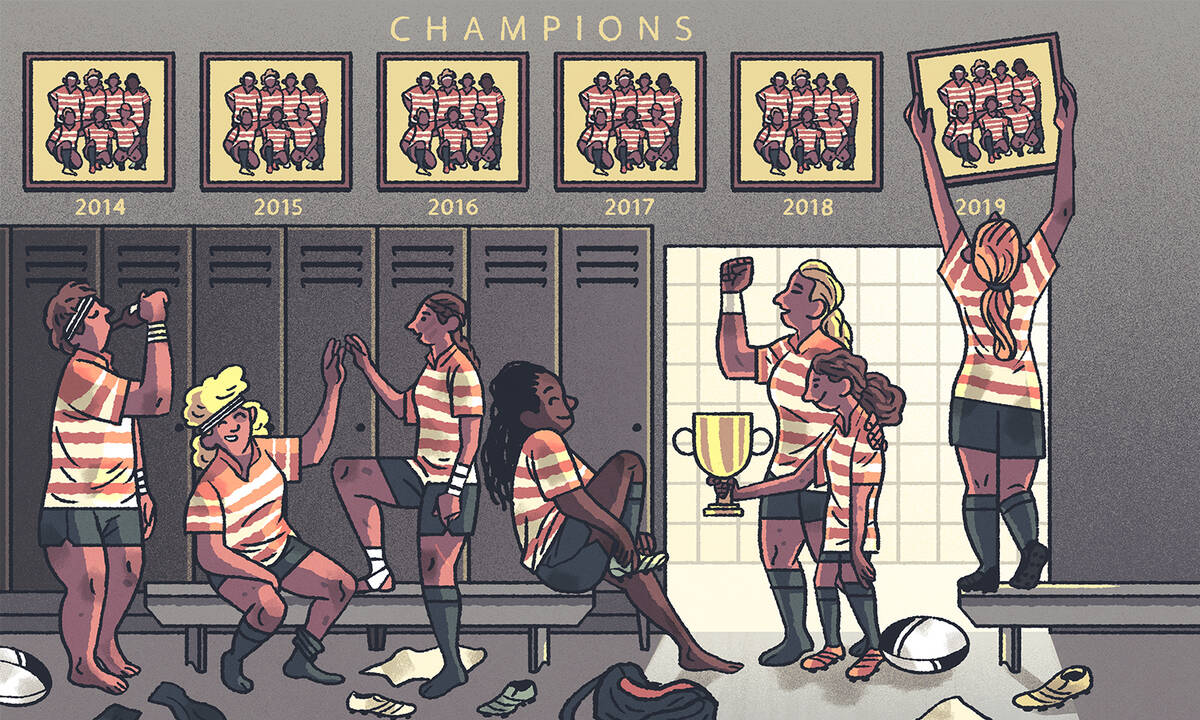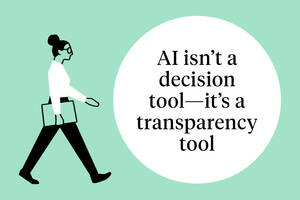NFL coaching legend Vince Lombardi famously declared that “Leaders are made, they are not born,” while Olympic gold medalist Jackie Joyner-Kersee has mused, “It is better to look ahead and prepare than to look back and regret.” It is hard to deny the wisdom—or at least the math—in hockey great Wayne Gretzky’s observation, “You miss 100 percent of the shots you don’t take.” And who can forget baseball manager Casey Stengel’s insightful philosophy: “They key to being a good manager is keeping the people who hate me away from those who are still undecided.”
Reaching the top echelon of a sport requires talent, discipline, confidence, excellent training, and a bit of good luck—in other words, the same qualities that lead to success in many fields, business included. So it makes sense that business school faculty also turn to the field (or diamond, or court, or gymnasium) for data and inspiration about how to manage an organization.
Here are some of our favorite sports-inspired takeaways for leaders.
In business, as in sports, there are often superstars who get put on pedestals. But how much do these superstars’ reputations become a self-fulfilling prophesy?
To investigate, Brayden King, a professor of management and organizations at Kellogg, turned to baseball. He found that high-status pitchers get more favorable calls—in essence, a wider strike zone—than lower-status pitchers.
Umpires are 25 percent more likely to call an actual ball a strike when it is thrown by a five-time All-Star pitcher versus one with zero All-Star appearances, and they are 14 percent less likely to call an actual strike a ball. The benefit of the doubt accorded to high-status pitchers is highest when the pitch travels close to the edge of the strike zone, meaning there is more uncertainty surrounding the decision.
This favoritism for individuals with a strong reputation extends far beyond baseball.
“When you are high status, you tend to get more recognition for your accomplishments” across a range of contexts, explains King. “And that means that it’s much easier for people who are at the top of the hierarchy to … reproduce their success.” This form of reputational bias even extends to organizations, with more prestigious companies getting the benefit of the doubt in employment-discrimination suits.
The research offers managers an important takeaway about the tangible benefits of developing a reputation for excellence. But it is also a cautionary tale about the challenges of treating everyone fairly.
“People who are at the bottom of the hierarchy have to expend a lot more effort and a lot more of what meager resources they have,” says King.
Speaking of reputation, first impressions matter. But it’s not just individuals who benefit. Research from associate professor of marketing Rima Touré-Tillery suggests that groups do too.
Touré-Tillery and her coauthors had participants read a story about seven college gymnasts performing a floor routine. They were informed that one particular gymnast, Emma, had performed phenomenally. The participants had been told upfront that the athletes did their routines in a random order. Nevertheless, when they read that Emma had performed first, they predicted that subsequent performers would also perform better compared to when they read that she had gone fourth or last.
“Labeling someone or something ‘first’ can have a huge influence not only on your judgment of them, but on your judgment of others that are associated with them,” Touré-Tillery says. “Just putting the label ‘one’ on something or someone can make a big difference.”
For businesses, the applications of the first-member heuristic are clear: Make sure that whatever you call “first” is the best, Touré-Tillery says. Put your best employee on cashier number one, and your tastiest menu items on Combo Meal #1. That’s because judgments about those individuals and items will shape what your customer expects from your entire product or service.
Basketball icon Steve Kerr carved out a long playing career thanks to his prowess from behind the three-point line. But for years he went virtually unrecruited because he wasn’t fast enough and couldn’t jump high enough.
How could this be? Specialists like Kerr, though highly effective in their own roles, are nonetheless often judged by the same standards as generalists—to their disadvantage.
Along with a coauthor, Keith Murnighan, the late professor of management and organizations at Kellogg, looked at salary and performance data for over 300 NBA players and found that, on average, three-point specialists’ salaries aren’t tied to their three-point shooting but to their two-point shooting—even though their three-point shooting has the bigger impact on their team’s performance.
Part of the problem, according to Murnighan, is that we have a natural tendency to compare people against one another. “Do you want five superior athletes, or one clunky, non-jumping, great-shooting three-point shooter and four great athletes? In fact, the five great ones—on average—might each be better than this guy, but as a team you do better when you have a role player who can do something special.”
This tendency is all-too prevalent in the workplace as well. In another study, the researchers scoured job ads posted to Monster and Careerbuilder. They found that even positions flagged for specialists often asked applicants to have skillsets in multiple domains—and that larger organizations, those best equipped to take advantage of specialists—were the worst offenders.
Sometimes even the most elite teams lose to scrappy underdogs: look no further than U.S. hockey’s “Miracle on Ice” at the 1980s Olympics.
Popular wisdom has it that both talent and the ability to work well together contribute to a team’s success. Still, the relative importance of each factor hasn’t been clear.
Brian Uzzi and Noshir Contractor, both professors of management and organizations at Kellogg, along with their coauthors, looked at individual and team statistics from the NBA and MLB, as well as the English Premier League (soccer) and the Indian Premier League (cricket). They also gathered data from an e-sport game called Defense of the Ancients 2. Then they created a computer model that took into account individual performance, as well as a team’s history of success together, in order to predict who would win a match. They found that individual talent was a stronger predictor of victory—but that teamwork mattered too.
Uzzi believes the takeaway—that top talent alone won’t help a team reach its fullest potential—can be generalized to businesses as well. Sometimes companies “shoot for the best talent, but the best talent doesn’t get along,” he says.
These days, the best leaders are using data—lots of it—to drive decision-making.
Daryl Morey, the data-hungry general manager of the Houston Rockets (and Northwestern alum), puts it this way: “How can you know if you’re dealing with something spurious or a real trend? A guy is hot in the first half—is he hot because he’s picking really good shots? Do we need to close him down? Or did we actually follow the game plan well and we were just not lucky in the first half and we should just stick to our game plan?”
The answer to all of these questions, he says, is in the data.
But listening to that data tends to be easier when they support your predictions and beliefs, which isn’t always the case. Take the “2 for 1”—a clock-management strategy where you give yourself time to take two quick shots at the end of a quarter instead of holding the ball for the last shot.
“Coaches historically had wanted to go for one good shot,” says Morey. But when Jeff Van Gundy was the head coach of the Houston Rockets, Morey approached him with data that showed that speeding up for two shots was a more winning strategy. Despite some initial skepticism, Van Gundy ultimately came to agree with Morey.
Did that mean he always encouraged his players to adopt this strategy? Not exactly, says Morey. “He didn’t always implement it because he felt like the difference in winning or losing wasn’t big enough. I think he’s right about that.”
The upshot? “You don’t always have to use data to help drive a decision, but you do always have to see if you can do that,” says Morey.
(You can check out the rest of our 2015 interview with Morey here.)




